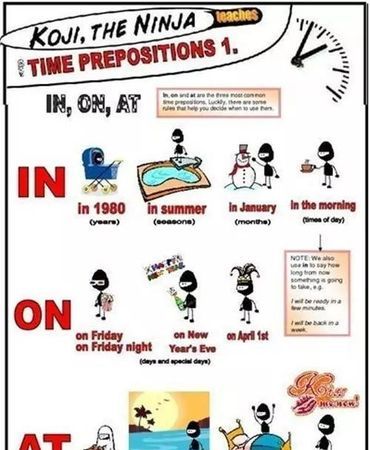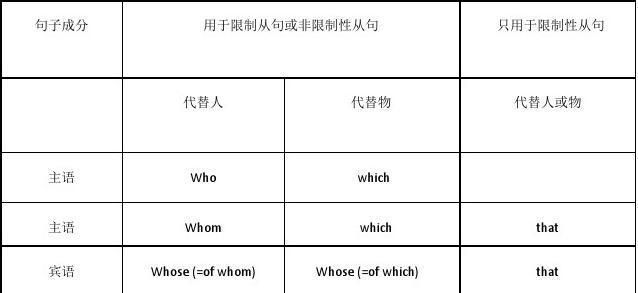本文目录
介词短语作后置定语的句子结构
He is a man a man of good temper.
1. 地点:He sat at the table near the window(靠窗的桌子)
2. 时间:he is eager for their activiries during the holidays(他们假期的活动)
3. 特征:In came a woman with a baby in her arms (那位抱孩子的女人)
4. 类属:He watched a film about the life of workers(一部描写工人生活的书)

英语介词短语做后置定语例句
a girl from England (from England是定语)

英语定语后置句
一、某些表示地点、方位、时间的副词作定语时,通常要后置。例如:
Do you know the lady downstairs ?
你认识楼下的那位女士吗?
The life tomorrow will be more comfortable.
明天的生活将令人感到更舒适。
二、介词短语作定语时,必须后置。例如:
The friendship between the two countries will last forever .
两国之间的友谊将长存。

三、非谓语动词短语(不定式和分词)作定语时,必须后置。例如:
What is the language spoken in this African country ?
这个非洲国家讲什么语言?
This is the gentleman to be interviewed next time.
这是下次要采访的先生。
四、从句作定语时,必须后置。例如:
The officer visited an island where only two soldiers live .
这位军官访问了只有两位战士居住的一个岛屿。
五、其他定语后置现象
1、形容词修饰不定代词时,通常要后置。例如:
-What”s the matter with you ? 您怎么啦?
-Nothing serious. 没啥大不了的事儿。
2、形容词短语作定语时,通常后置。例如:
Italian is a Language very difficult to learn.
意大利语是一门非常难学的语言。
3、含有-able , -ible 等后缀的形容词作定语时,常放在被修饰的词后面。例如:
The travellers have tried all the ways possible.
这些旅行者已试过了所有可能通的路。
4、某些形容词如alive 、asleep等作定语时,必须后置。例如:
The lady is one of the greatest novelist alive.
这位女士是当今最伟大的小说家之一。
英语后置定语例句
一、 形容词作复合不定代词的后置定语
当被修饰词为复合不定代词something, anything, nothing, everything; somebody, anybody, nobody, everybody; someone, anyone, everyone, no one时,修饰语常位于被修饰的不定代词之后。
(1) Do you have anything else to say about it?
关于这件事,你还有什么要说的吗?
(2) I have something important to tell you.
我有些重要的事情要告诉你。
(3) Someone important will give the students a lecture on how to learn English well.
今天下午,一位重要的人物将给学生们做一场有关如何学好英语的报告。
二、 形容词作疑问词的后置定语
修饰疑问词what, which, who, whose, whom, when, where, why, how时,修饰语要后置。
(1) What important would you like to talk about?
你想谈论什么重要的事情?
(2) What else would you like to eat?你还想吃什么?
(3) Where new have they decided to visit?
他们决定到哪些没有去过的地方参观?
三、 enough作后置定语
enough(a.)修饰名词时既可以在名词前,也可以在名词后。
(1) We have not enough time (time enough) to do the job.
我们没有足够的时间做该工作。
(2) They have enough people(people enough)to do the experiment.
他们有足够多的人手做这个实验。
但enough(adv.)修饰形容词或副词时,须位于被修饰的形容词或副词之后。例如:good enough (足够好的),big enough(够大的),fast enough(够快),carefully enough(足够仔细)。
四、 介词短语作后置定语
the map on the wall 墙上的地图
the bird in the tree 树上的那只小鸟
the development of China 中国的发展
the way to the school 去学校的路
the life in the future 未来的生活
五、 动词不定式作后置定语
1.在某些名词结构中可用动词不定式作后置定语。
(1) He has lots of things to do.他有很多事情要做。
(2) Jack needed someone to carry the box.
杰克需要人来搬这个箱子。
(3) She always the first one to arrive at the school.
她总是第一个到达学校。
(4) There are a lot of things to do. 有许多事情要做。
2. 在某些名词后可用动词不定式作定语。
例如:ability, decision, chance, courage, right,determination, promise, ambition, drive, effort, eagerness, failure, movement, need, opportunity, plan, reason, struggle, time, way, wish,等等。
(1) I don’t have the courage to tell you the truth.
我没有勇气告诉你事实。
(2) Does he have the ability to do the work?
他有能力干这项工作吗?
(3) You have no right to do such a thing!
你没有权利做这样的事!
(4) I’ll show you my determination to stop smoking.
我将向你们表明我戒烟的决心。
六、 分词短语作后置定语
1. 现在分词短语作后置定语。
(1) There is a dog lying on the ground.
有只小狗躺在地上。
(2) The girl sitting by my side is my sister.
坐在我旁边的是我妹妹。
(3) Here is a map showing you how to get to the railway station.
这儿有一张地图,告诉你怎样去火车站。
2. 过去分词短语作后置定语。
(1) This is a film directed by Feng Xiaogang.
这是一部由冯小刚导演的电影。
(2) She is a nurse trained by ourselves.
她是我们自己培养的护士。
(3) What is the language spoken in Spain?
西班牙使用的是什么语言?
3. 部分过去分词也可以作后置定语。
例如:left, gained, used, offered, discussed, ordered, wounded, injured, concerned, conducted, done, held, arranged, planned, suggested, finished, completed, arrested, given, fallen, constructed, missed,等等。
(1) Is there anybody injured?有人负伤吗?
(2) The money left is not enough for so many people to live through.
剩余的钱不够这么多人用的。
(3) She liked all the courses offered.
她对所开的课程都很喜欢。
(4) The experience gained will be of great value to us.
取得的经验将对我们很有价值。
七、定语从句作后置定语
1. 定语从句作后置定语的构成是:
先行词+关系代词/副词+从句。引导定语从句的关联词包括关系代词和关系副词,关系代词有:that,which,whose,who,whom,as,等等。关系副词有:when,where,why,等等。关系代词和关系副词在定语从句中充当一定的句子成分(可充当主语,宾语,标语等句子成分)。
注意:关系代词在从句中充当动词的宾语时一般可以省略。
(1) The student who answered the question was Jack.
(2) The boy (whom) you are talking to is my brother.
在跟你交谈的那个男孩是我的哥哥。
2. 关系代词的选用比较复杂,受下列条件的制约:
① 要看先行词是指人还是指物。
People who take physical exercise live longer.
进行体育锻炼的人活得长些。
② 要看关系代词在从句中句法功能。
I still remember the day when/on which my brother joined the army.(作状语)
我仍然记得我哥哥参军的那一天。
I still remember the days which/that we spent together.(作宾语)
我仍然记得我们在一起度过的日子。
I’d like a room whose window looks out over the sea.(作定语)
我想要一间窗户朝向大海的房间。

扩展资料
有时,to do也可以做后置定语。例如:I have some homework to do。我有一些要做的作业.
注意若在to do的句子中,to do不是表示目的状语或补语,那么to do很可能就是后置定语
以上就是关于时间介词做后置定语例句英语 ,介词短语作后置定语的句子结构的全部内容,以及时间介词做后置定语例句英语 的相关内容,希望能够帮到您。
